How to Make Fizzy, Refreshing Kombucha and Break the Soda Habit
Fizzy, Second Fermentation Kombucha is a tonic drink that satisfies your thirst, fuels your health, and can help you conquer your soda habit. Kombucha has so many health benefits from boosting your immune system, removing heavy metals, and more. It energizes better than pop. And the fizz of second fermentation is satisfying and refreshing.
You know drinking diet pop, colas, or other soft drinks can hurt your body. Your body can’t fuel on sugar substitutes and high fructose corn syrup is hurting you, spiking your blood sugar, hurting your eyes, and harming your brain cells. Plus it robs you of the energy that you were hoping to get by drinking it. Kombucha to the rescue.
While Kombucha is made with tea and sugar, the fermentation process converts the sugar into acetic acid (aka. vinegar) and a small amount of alcohol (less than 1%). An 8 oz bottle of Kombucha has less than 30 calories and only 2 grams of sugar. Kombucha that’s gone through a second fermentation process in a bottle is full of refreshing fizz and flavour. In fact, switch your soda habit to a Kombucha habit and your body will respond by craving Kombucha to increase your energy level and healing the damage to your digestion that the soda habit caused in the first place. That’s a win.
What IS Kombucha?
Kombucha is a traditional tonic drink made from sweetened tea and a symbiotic culture. It is known for its detoxifying, and energizing effects. Coveted by health nuts for decades, it can be found in health food stores and some natural markets that cater to the organic elite. It’s also found in supermarkets. Even Costco carries it by the case. But the bottles are pricey when purchased individually. I’ve got good news about your budget! Kombucha can be made at home for the cost of a few tea bags and a half cup of sugar.
While all the health benefits of kombucha are found in the fermented elixir, putting kombucha through a short, second ferment in a capped bottle pushes this tonic into the realm of perfection. First ferment kombucha can be slightly sour and effervescent or strongly acid and flat tasting, depending on how long the ferment was allowed to progress. You can test the fermentation with pH test strips. I found that the best tasting kombucha is around a 3 pH. Fizzy, bottled kombucha, on the other hand, has a pleasant taste, with a sweet and slightly alcoholic flavour, like a cider cooler, while maintaining its healthy beneficial attributes, and staying low in sugars and calories.
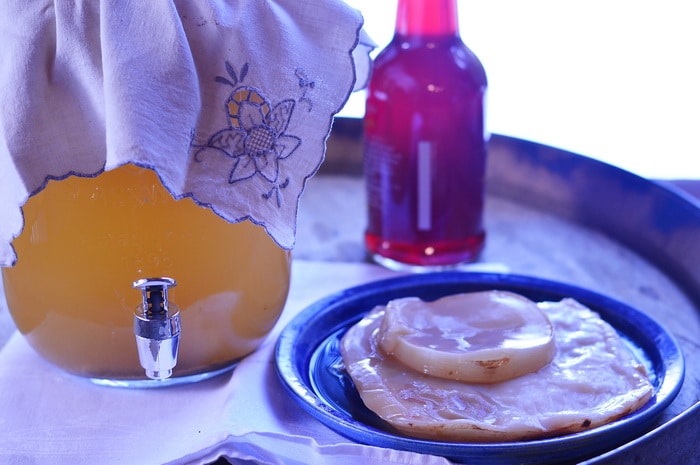
To make fizzy, bottled kombucha follow these simple steps:
- Start your next batch of Kombucha using tea, sugar, and your Kombucha starter and scoby from the last batch. To do this: Boil water and steep 5 tea bags and ½ cup of organic sugar in a glass measuring cup that holds 8 cups of tea. Allow it to cool to body temperature of around 98F. Pour 7 cups of tea into your fermentation container – I use a 2 quart wide mouth mason jar. Add 1 cup of a previous batch of kombucha or kombucha starter. Gently place the scoby from a previous batch of kombucha on the surface of the liquid in the fermentation container or jar. Cover with a cloth, such as a clean pocket handkerchief. Secure with a rubber band. Place in a warming cupboard, away from extremes of temperature. Ignore for 5 days. For more information see this post.
- Take the remaining fermented kombucha from the batch that you took the starter and scoby from. It should be 7 cups of fermented kombucha. Put it into an 8 cup/2 quart glass measuring bowl. Add 1 cup of fruit juice such as grape, pomegranate, blueberry, or cranberry. Stir well. Pour into clean pop or beer bottles. Bottles with spring caps work well. Leave at least 1 to 1 ½ inches of headspace to allow for pressure to build inside the bottles. 8 cups of liquid will fill 6 – 10 ounce bottles.
- Cap bottles using metal crimp caps and a bottle capper or complete the closures on swing-top bottles according to the manufacturer’s instructions.
- Allow the bottled kombucha to sit for 24 to 48 hours on the counter or in a warm place. Test the kombucha after 24 hours, as you don’t want it to ferment too long and begin to taste like beer.
- The kombucha is ready when an opened bottle fizzes when it is poured into a glass, makes a small foam on top of the drink when poured and has a slight fizzy feel on your tongue when you drink it. Depending on how warm your home is, these bottles could be ready in 24 hours or a bit longer, up to 48 hours. Once the bottles are deemed ready, refrigerate your finished kombucha to slow down the fermentation.
- Enjoy at least one bottle of kombucha a day to realize the health benefits. If you have enough kombucha you could drink one bottle three times a day, every day to get the full benefits which include a reduction of blood sugar levels, lower blood pressure, weight loss, detoxification, cancer prevention and a reduction in tumor size, better digestion, increase metabolism, lessening of stomach symptoms, cure for enteritis and noroviruses, increased energy and vitality.
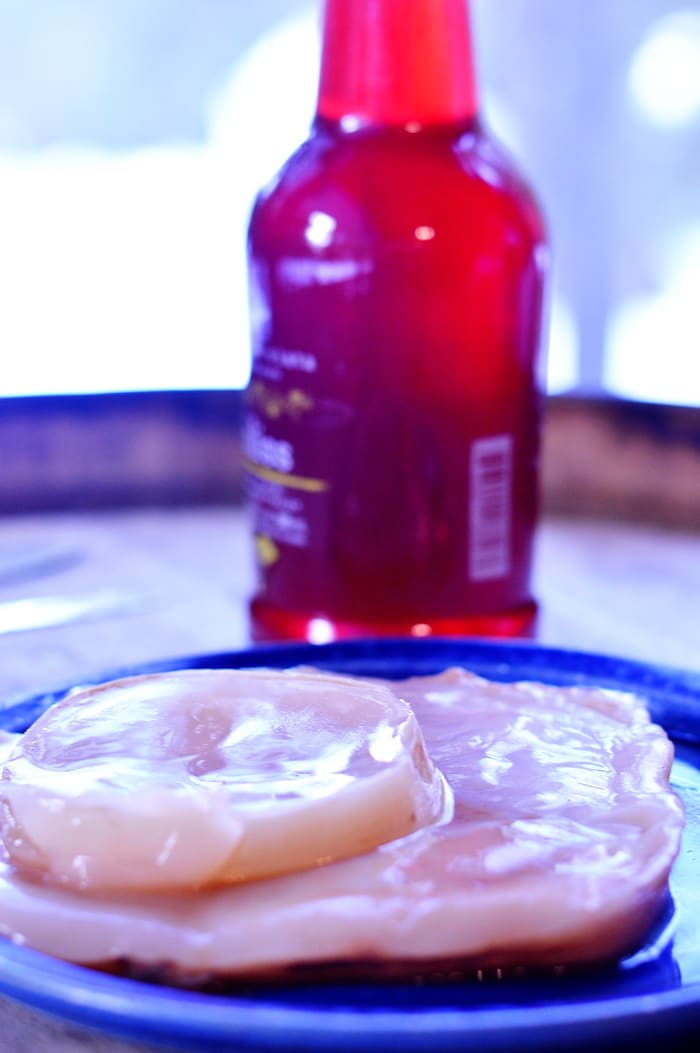
Articles in this Joybilee Farm series
Secret super-healing power of Kombucha and how to grow your own — Part 1
Making your own super-star healing tonic in sufficient quantities for your family – Part 2
Super-star secrets to help you break the soda habit — 2nd ferment Kombucha – Part 3 (This post)
What can go wrong? Trouble Shooting your Kombucha problems – Part 4
6 Ways to incorporate Kombucha into your lifestyle – Part 5


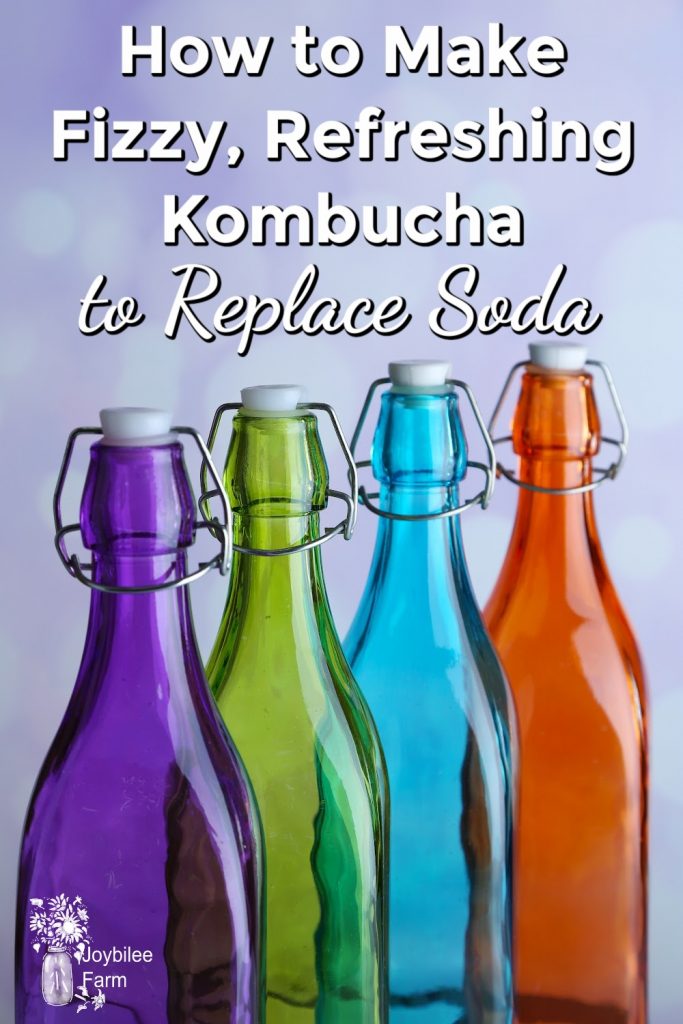
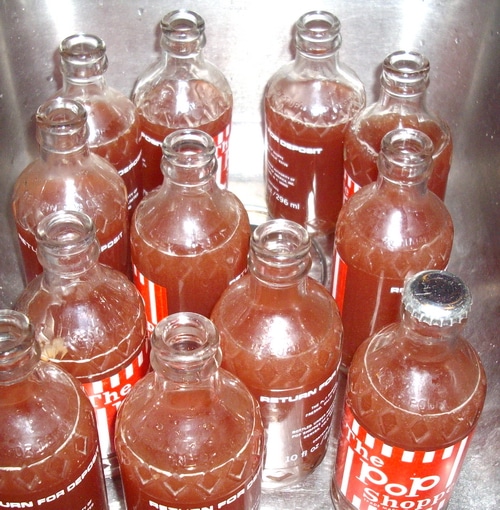
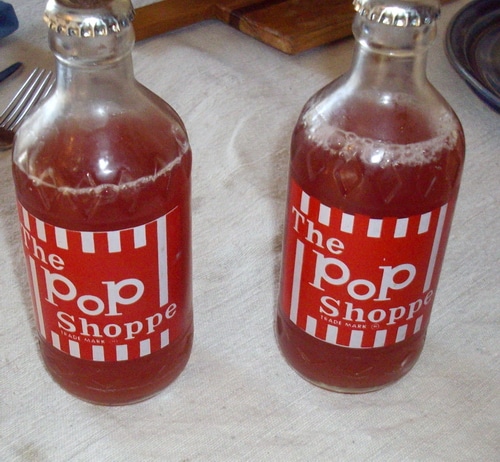
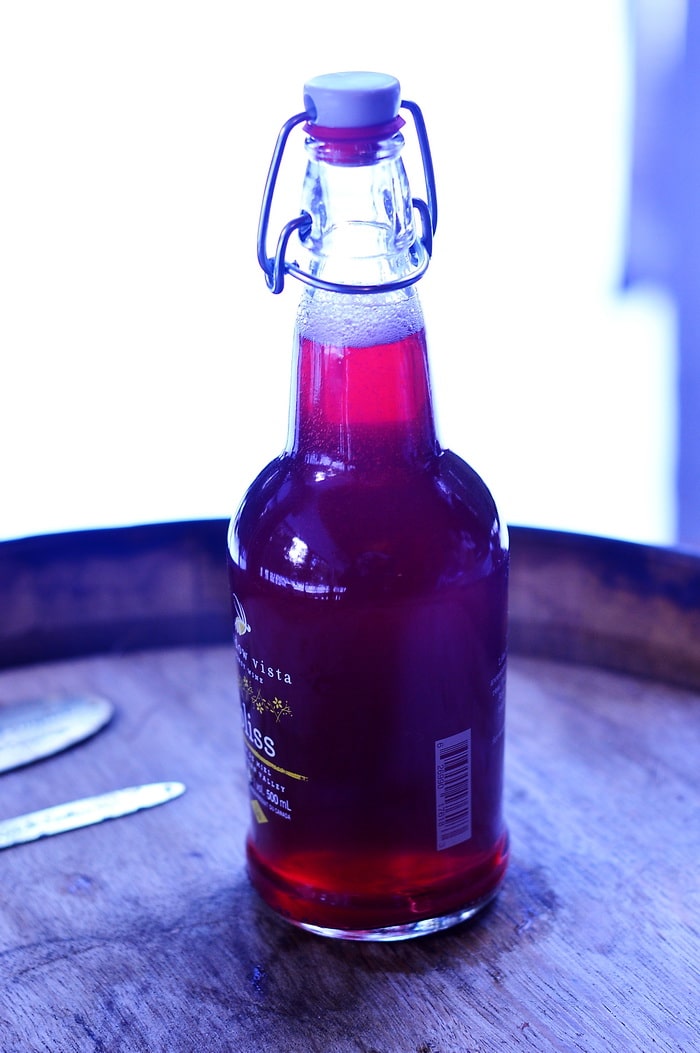

I love your blog and have followed you and learned from you for years. Thank you for sharing your expertise on so many topics!
I have just read your series about how to make kombucha. I’m excited to get started!
Question: When you add the fruit juice, as described in this post,, does it need to be sterile? I can’t find any specifics on the juice, but I’m guessing you wouldn’t want to introduce any other microbes along with your juice to your second fermentation.
I was thinking of juicing raspberries or blackberries from my garden to make flavored varieties. If using fresh-pressed juice, would I need to heat it to kill off any microbes, and then cool it before adding to the plain kombucha for the second ferment? Or would thawed, previously frozen juice work?
Thanks!
Thanks!
It probably is that your scoby is weak due to not enough nitrogen in the tea. I’d try making a stronger tea, maybe with 10 tea bags, to feed the scoby. Then after that initial batch go back to 8 bags of tea. Also use plain black tea. The chai spices can inhibit the bacterial growth preventing the scoby from doing its job. Spices are highly antifungal and antimicrobial and can stop the fermentation completely, in some cases.
Hi! I got a new scoby, made tea with 6 (I realize I should be using 8) bags of Stash Spiced Chai black tea, steeped for 10-15 minutes, poured into gallon jar with white sugar, stirred, poured cold water in until just enough room for scoby and starter tea. I made sure temp was between 75-90 degrees before I poured in scoby, covered with paper towel and stored in pantry for 7 days. I tasted, it was perfect, so I removed scoby. I used either pineapple or mango from a can in juice and blended until smooth. I sterilized my jars with a flip top and filled each with 1/4 cup blended fruit. I then added the kombucha, leaving about 1 1/2″ on top and put in dark cupboard. I burped each bottle every 12 hours and at about 48 hours I tasted and stuck in fridge. I have done this whole process several times (I just finished a batch and my next is on day 2 of first fermentation. But each time the kombucha tastes off. It has a hint of a bad taste, like it’s going bad and I keep reading and making sure I am doing everything right, but something is off. I tossed first scoby after 2nd batch and started with a new one and have used it twice. Can you tell what I am doing wrong? Thanks so much!